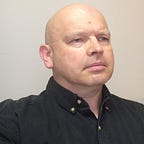Are You Growing Your Boutique IT Service Firm For Show or Dough?
Or are you building it for size or profit?
Imagine a weasel. Imagine that little demon of destruction, that insensate courage, tireless activity and incredible agility.
Multiply this might 50-times and you have a wolverine.
And this 45 lb animal can make a 1000 lb grizzly bear run for his life, hysterically crying for his mother?
And something very similar plays out among IT service firms too.
Some grow for size (headcount and gross revenue) and some grow for strength (profit per employee).
But to better demonstrate how this relates to the growth of boutique IT service firms, let’s talk about how weight training builds muscle in humans because there is a dangerously high number of IT service firms grow that grow the wrong way.
First consider bodybuilders. They are building muscle for show. Muscle for size. Muscle for parade. Muscle for impression.
Now consider athletes, like weightlifters or gymnasts. They are training for their sports and muscle building is a side effect. So, they end up with muscles for power, muscles for specific sport functions.
So, now let’s look at the structure of the muscle and how bodybuilders’ and athletes’ approaches differ when it comes to building muscle.
Imagine the muscle as a package of spaghetti. The individual spaghettis are the muscle fibres, known as myofibrils. The package, called sarcoplasm, is the sheath enveloping the spaghetti, the individual muscle fibres.
And here is the difference.
Athletes, who train for muscle function, strength and power, grow the size of the spaghetti inside the sheath, and the sheath grows naturally as the muscle fibres grow. The sheath is always tightly packed with muscle fibres. This is called myofibrillar muscle growth, that is, muscle growth for function.
By contrast, bodybuilders train for muscle size.
They are growing the size of the sheath itself with little consideration for the real muscle fibres inside. And all the space that is not occupied by muscle fibres is filled with water. Not really water, but all sorts of fiendish body fluids.
This is called sarcoplasmic muscle growth, that is, muscle growth for show and parade.
So, now we can go back to IT service firms and consider how they grow.
First, let’s consider the “bodybuilder” type firms
Just as sarcoplasmic muscle growth, the growth of the sheath itself requires high volume of training to create size for show.
This is how ”bodybuilder“ type firms operate.
They have lots of people, incredible level of busyness, lots of clients and preponderance of projects.
Everyone is running around like a headless chicken. People are busy doing client work, writing proposals and chasing new prospects.
These firms operate on high volume and, well, you’ve guessed it right, low margins. They have impressive top indicators, like incredible gross sales and unimaginable number of billable hours. So, if you don’t look beyond the veneer, these firms can look truly impressive and nipple-piercingly successful.
By contrast, let’s see the “athletic” type firms
These firms train with lower volume but uses heavier load for building functional muscles.
That is, they have fewer but cherry-picked clients and work on highly customised, high-ticket projects.
This is myofibrillar muscle growth for function, strength and power, with little regard for show.
Those firms focuses on growing the size and the number of its individual muscle fibres, knowing that the sheath will grow in response to fibre growth.
As opposed to impressive top indicators, athletic firms have nice bottom indicators like net profit per employee or net profit per project.
They work systematically without chronic busyness and chaos which often describe “bodybuilder” type firms.
Now let’s revisit the grizzly bear and the wolverine. How can this little creature spread fear among such mighty animals as grizzly bears? One is definitely agility. The other is body composition. While the wolverine is almost 100% pure muscle, a large chunk of the bear is fat.
Similarly, a large chunk of most IT service firms is “organisational fat”, including but not limited to posh offices at the upscale end of town, fleets of impressive company cars, super expensive mahogany desks, unnecessary business trips, luxury “strategy retreats” and excessive number of — often underskilled — staff members with superficially impressive credentials.
And most of these firms, although looking big and impressive on the outside, are pitifully underperforming on the inside.
Yes, they can brag about impressive billable hours and billing rates, but after the overheads and salaries are paid, they don’t have much to show for.
It reminds me of a former classmate at university who, in 1988, walked around with a mobile phone on his belt to impress us, but didn’t have money to actually get his phone connected to use it for any practical purpose. It was all for show and parade. Oh, he also had three pagers.
So, now my question to you is this: What kind of firm are you building? Are you building a dysfunctional muscle-bound behemoth or a functional, practical, agile, lean and mean athlete of a firm?
- Do you build your firm for show or for dough?
- Do you build it for size or function?
- Does your firm have an essence, a core or is it all veneer?
- Does your firm have an essence, a core or is it all veneer?
Is your firm more of a fat grizzly bear or a lean and agile wolverine?
